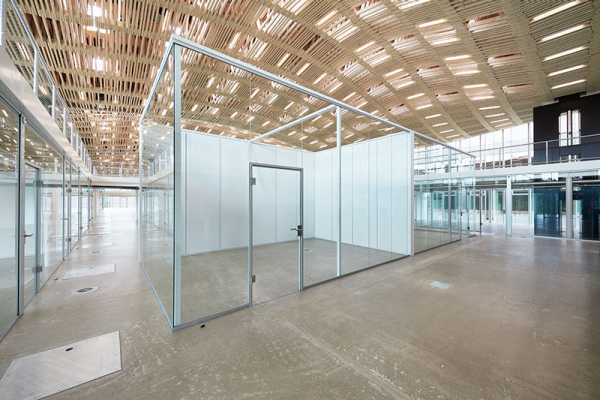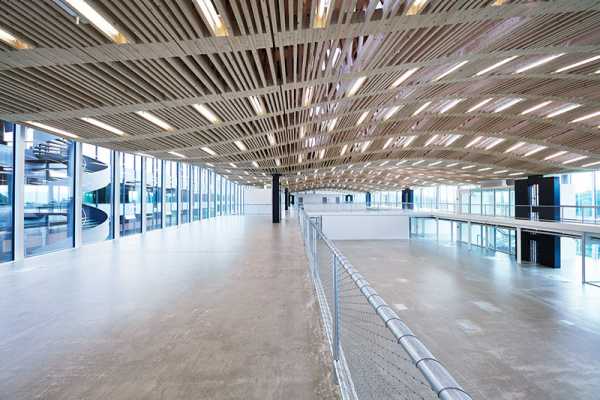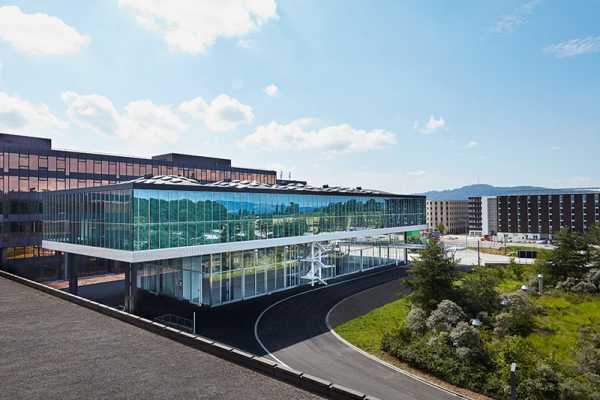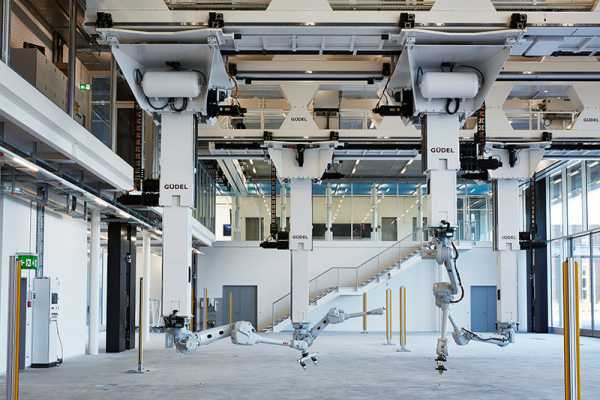Research on construction
The Arch_Tec_Lab demonstrates how digitisation can contribute to resource-efficient, compact and emissions-free construction. Six professors from ETH Zurich have pooled their research approaches and developed a prototype of the innovative building together.
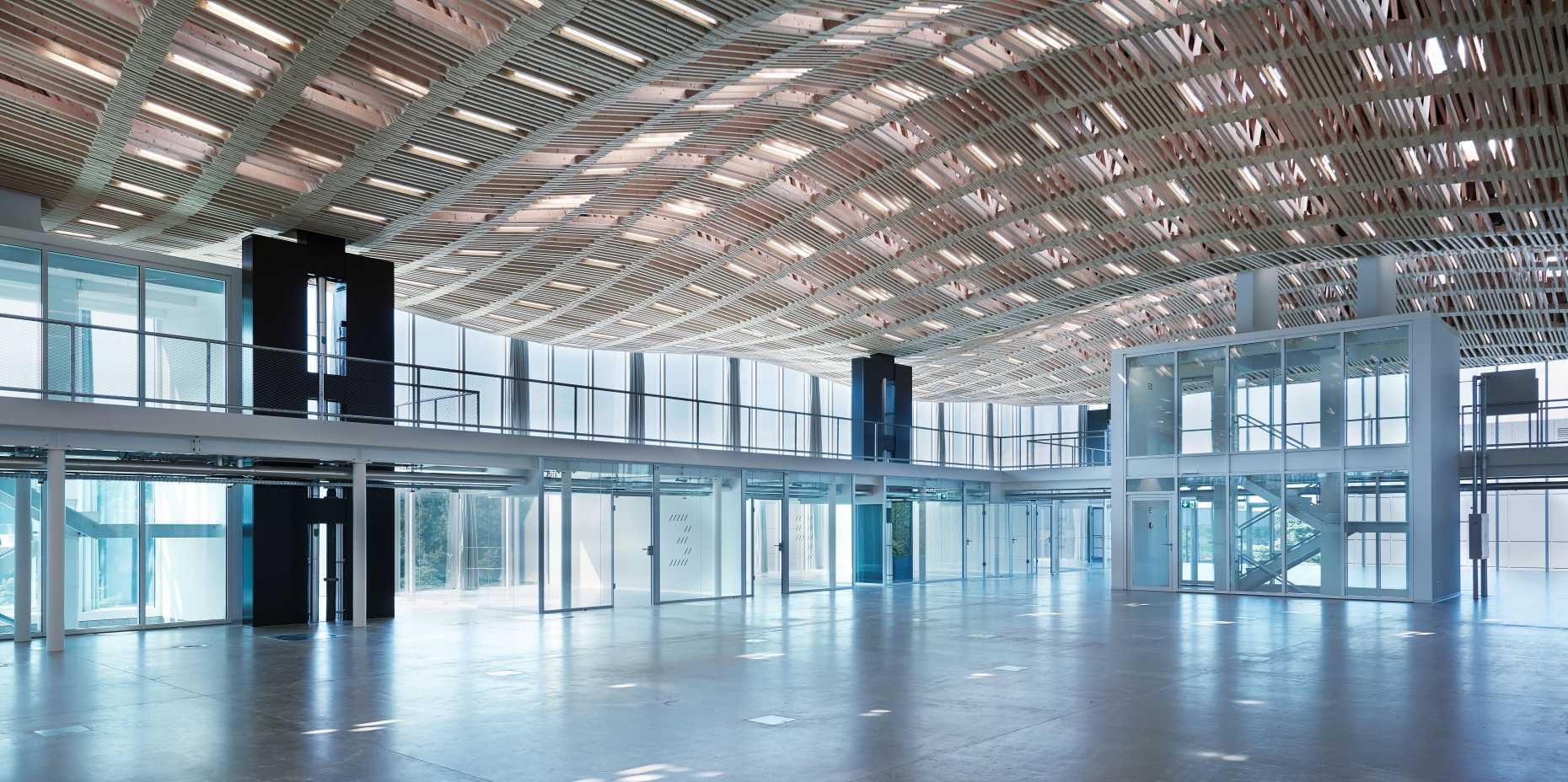
The largely digital planning and construction process took six years and involved architects, civil engineers, building service engineers and construction physicists from six Chairs at the Institute of Technology in Architecture at ETH Zurich. Together, they aimed to investigate how to use digital technologies and collaborative planning processes to contribute to resource-efficient and spatially compact construction. They have created a laboratory with real-world conditions where they can apply their latest findings on a 1:1 scale. A new building – the embodiment of sustainability at every possible level – has been built on the roof of an existing car park on the Hönggerberg campus and is connected to the existing Department of Architecture building by a skyway.
Lightweight wood and steel
In order to build on the existing structures, the scientists focused on lightweight construction technology and consciously built with less construction mass. In comparison to conventional high-rise buildings, which have up to 400 kilograms of material per cubic metre, the average built-up volume of the Arch_Tec_Lab is only 240 kilograms.
Wood was chosen for the roof construction and steel for the load-bearing system of the building because these materials have ideal stiffness-to-weight ratios. In addition, the steel structure gets by without supporting cores and shafts, which both allows for flexible use and makes it possible to adapt the interior design to changing needs.
Robot-fabricated timber roof
The curved timber roof of the Arch_Tec_Lab was fully prefabricated by a single gantry robot using an integrated digital planning and production process developed under the supervision of the Chair for Architecture and Digital Fabrication together with specialist planners and ERNE, the company that executed the project. Built from more than 48,000 individual timber beams with individual lengths of up to 3.10 metres, the roof construction has a span of around 15 metres. 168 serially joined and robot-assembled nailed trusses carry the loads to five panels on steel beams and integrate the entire infrastructure, from fire protection to lighting. The graceful structure of the trusses, bare of any other cladding, appears as a single form spanning the approximately 2,300 square metre roof, which – with its elegant undulation and changing exposure to light – arches over the open upper storeys of the Arch_Tec_Lab.
The ETH scientists aim to utilise as few resources as possible, and not just in the planning and construction phase: the Arch_Tec_Lab should also function without emissions once occupants move in and work there. Zero-emissions technology developed at ETH Zurich since 2010 is therefore being used for the building services technology. Located in the building's double floor structure are 120 ventilation units known as airboxes, which are connected to the Hönggerberg campus's anergy grid. The airboxes will ensure proper ventilation of the building, while also helping to cool and heat it. The double floor houses the pipe system and draws air into the rooms by creating slight positive pressure above floor vents. For Ulrich Weidmann, Vice President for Human Resources and Infrastructure at ETH Zurich, the Arch_Tec_Lab is a major advance: “The scientists at ETH Zurich are developing innovations to solve infrastructural challenges. With the example of the Arch_Tec_Lab, they are proving that compact building designs and a sophisticated building culture are not mutually exclusive. They are therefore contributing to sustainable land use, which we at ETH are now benefiting from.”
The Arch_Tec_Lab embodies the latest technologies and a sustainable use of resources. (all photographs: Andrea Diglas, © ITA/Arch-Tec-Lab AG)
Continuing collaboration
The scientists are keen to pursue the collaborative approach that they chose for the construction of the Arch_Tec_Lab: there are no individual offices in the new building, which means more common areas for smaller and larger groups alike. Located on the ground floor, the Robotic Fabrication Laboratory initiated and planned by Gramazio Kohler Research exemplifies how the Arch_Tec_Lab's approach creates new spaces for interdisciplinary experiments in construction. Here, a ceiling-mounted gantry system allows for large-scale implementation of construction projects by means of four cooperating industrial robots. The robotics laboratory serves researchers from the Institute of Technology in Architecture as well as researchers from the National Centre of Competence in Research Digital Fabrication, and was created in close cooperation with ABB and Güdel.
For Sacha Menz, the intellectual father of the Arch_Tec_Lab and Head of the Institute of Technology in Architecture, the building is the realisation of a vision: both of the construction technology of the future and of a new type of collaboration. “The Arch_Tec_Lab is used for construction research, and this cannot take place behind closed doors. We are aiming for intensive interdisciplinary collaboration within the Institute and inspiration for research across the individual disciplines.”
Many of the questions being posed in the Arch_Tec_Lab remain unanswered – and this is intentional. The Arch_Tec_Lab sees itself as a laboratory with real-world conditions where researchers and their students can constantly tackle new issues and test solutions on-site. Their findings will benefit the construction sector and, ultimately, society as a whole.


